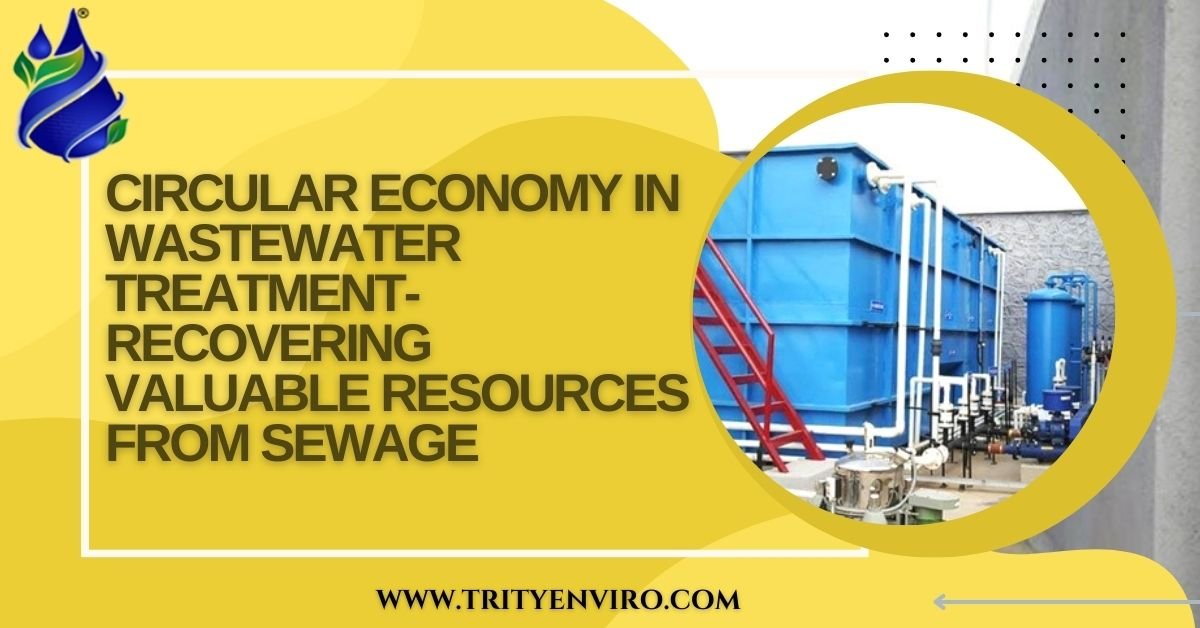
Understanding the Circular Economy in Wastewater Management
The circular economy reflects what is sought to be achieved. It encourages use of resources continuously. The formulation of this model is for recovery and reuse in wastewater treatment. Sewage is not discarded, but serves water, energy, and nutrients. Rather than waste them, facilities end up using them for what is useful. By doing so, it helps one to overcome environmental pollution. It also highlights the benefits of sewage treatment plant, such as saving money and conserving natural resources. Wastewater is a source of value, not a liability. Today, governments and industries globally are active and supporting circular practices. It is in consistence with global sustainability goals and climate commitments.
How Wastewater Becomes a Source of Valuable Resources
Wastewater holds untapped potential. It has organic matter and also contains energy-rich compounds and nutrients. These elements are extracted and purified by modern technologies. Today, treatment plants are becoming resource recovery facilities. Such recycled water is used for industrial or agricultural purposes. Sludge becomes biogas or biochar. Nutrients become fertilizers. This highlights the advantages of sewage treatment plant systems in promoting sustainability. It helps support water security and energy independence. It also lowers the requirement for chemical production by chemicals. The circular model closes the loops and relies less on virgin materials. It minimizes environmental degradation.
Nutrient Recovery from Sewage: Turning Waste into Fertilizer
1. Phosphorus recovery reduces mining dependency
Plant growth requires phosphorus. It also has limited reserve supplies, which is depleting fast. Phosphorus is in food and human waste and enters wastewater. Now, it is treated by crystallization and struvite recovery facilities. These processes result in slow-release fertilizers and take away the need to dig up phosphate.
2. Nitrogen recovery improves agricultural sustainability
Nitrogen is another vital nutrient. Production of traditional material needs large energy input, and results in greenhouse gasses release. Nitrogen can be recovered from sewage as ammonia or ammonium sulphate. Both are fertilizers, supporting the 'sustainable agriculture' with lower environmental impact.
3. Biosolids enhance soil quality
Sewage sludge, or biosolids, stabilized biosolids provide organic matter and nutrients to the soil. Biosolids can be treated so that they replace synthetic fertilizers. They preserve soil health as well as water retention in dry and degraded areas.
Energy Generation from Wastewater Sludge: A Sustainable Approach
1. Anaerobic digestion produces renewable biogas- The biodegradable material is sludge from wastewater. It breaks down in the absence of oxygen in an anaerobic digester. The process produces methane-rich biogas. The treatment plant or local grids are powered by this gas which cuts down on a fossil fuel dependency.
2. Thermal hydrolysis increases energy yield- Thermal hydrolysis pre-treats sludge before digestion. It does this to break down cell walls using heat and pressure. It increases output of biogas and decreases sludges. It facilitates energy recovery at a more efficient and economical rate.
3. Combustion offer additional options- Leaving over solids can be combusted after digestion. These methods help in the generation of heat and electricity. The separated remaining ash consists of nutrients that can be recovered separately.
Water Reuse in Industries: Closing the Loop Efficiently
There is an enormous amount of waste. Industrial sectors use an enormous amount of water. A sustainable alternative is wastewater reuse. The treated wastewater meets the required quality for most processes. Reclaimed water is used in industries for cooling, cleaning, as well as manufacturing. Using water helps to reduce stress on freshwater sources. Moreover, it lowers costs of operation and secures the supply during droughts. Many plants place on-site treatment systems. They enable real-time water recycling to close loops for operation. Some reclaim water to industries nearby, and some municipalities even supply such water to local industries. The biological wastewater treatment process plays a key role in enabling this cycle. The partnership supports the economy and the environment.
Innovative Technologies Driving Circular Wastewater Solutions
1. Membrane bioreactors enhance treatment efficiency- These are the biological treatment with membrane filtration systems. The production of effluent results in high quality fit for reuse. Being small, they are perfect for setup in an urban or industrial environment.
2. Algae-based systems convert nutrients into biomass- The algae eat nitrogen and phosphorus in wastewater. This takes away nutrients and turns it into valuable biomass. The algae biomass turns into biofuel, animal feed or biofertilizer.
3. Electrochemical treatment extracts metals and minerals- Some waste streams introduce valuable metals such as copper or zinc. They recover these metals with precision in electrochemical cells. As a result, it turns sewage into an industry's raw material.
4. Decentralized treatment offers flexible reuse options- Instead of treating the wastewater at a central location, decentralized systems handle the wastewater close to the source. These allow small-scale reuse in buildings or communities. They are resilience building and defence systems that minimize imposing strain on the infrastructure.
Benefits of a Circular Economy in Wastewater Treatment Systems
The treatment of wastewater from a circular perspective is also an important source of environmental and economic savings. It decreases the requirement of raw material extraction. It protects ecosystems and reduces emissions. Water reuse helps reducing the pressure on freshwater reserves. We will minimize nutrient recovery to reduce the use of synthetic fertilizers to the minimum. Circular systems also reduce operation costs. They make facilities self-sufficient through the power generation. Clean water and reduced waste are locally beneficial. This is an approach that is in line with the green policies, and it also helps improve sustainability ratings. Moreover, it encourages innovation and job making in the environmental market.
Conclusion
We can no longer manage wastewater the same old way. What we now cast aside drives innovation and sustainability. Recovering water, energy, and nutrients from sewage means resolving a cycle that has hidden value. It is an approach that benefits the environment, economy, and the future generations. Circular systems in wastewater treatment is not a choice, but a must have thing.


